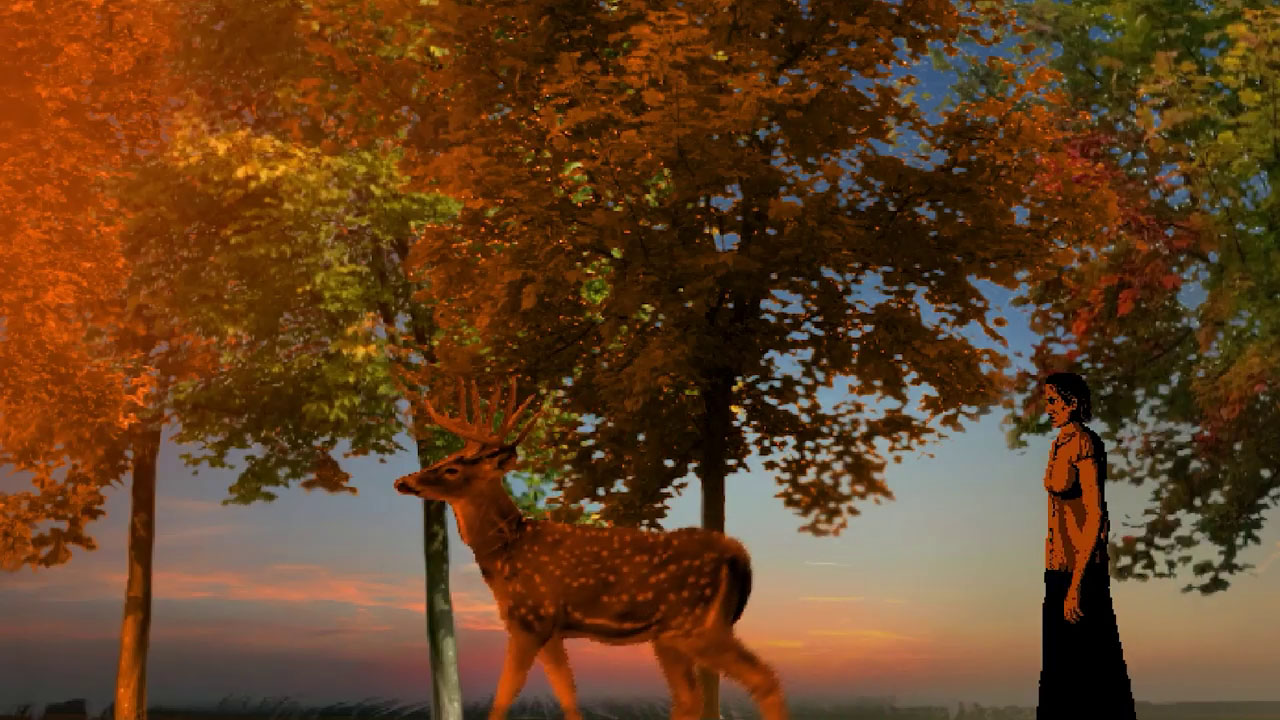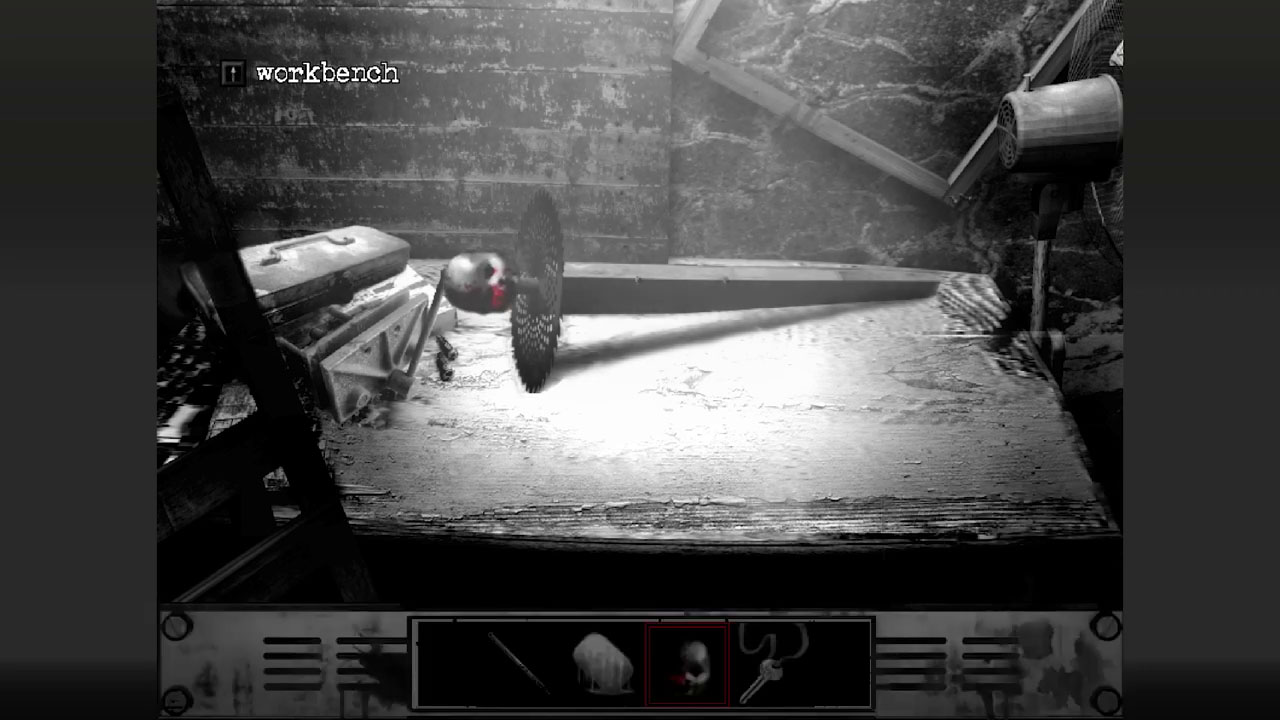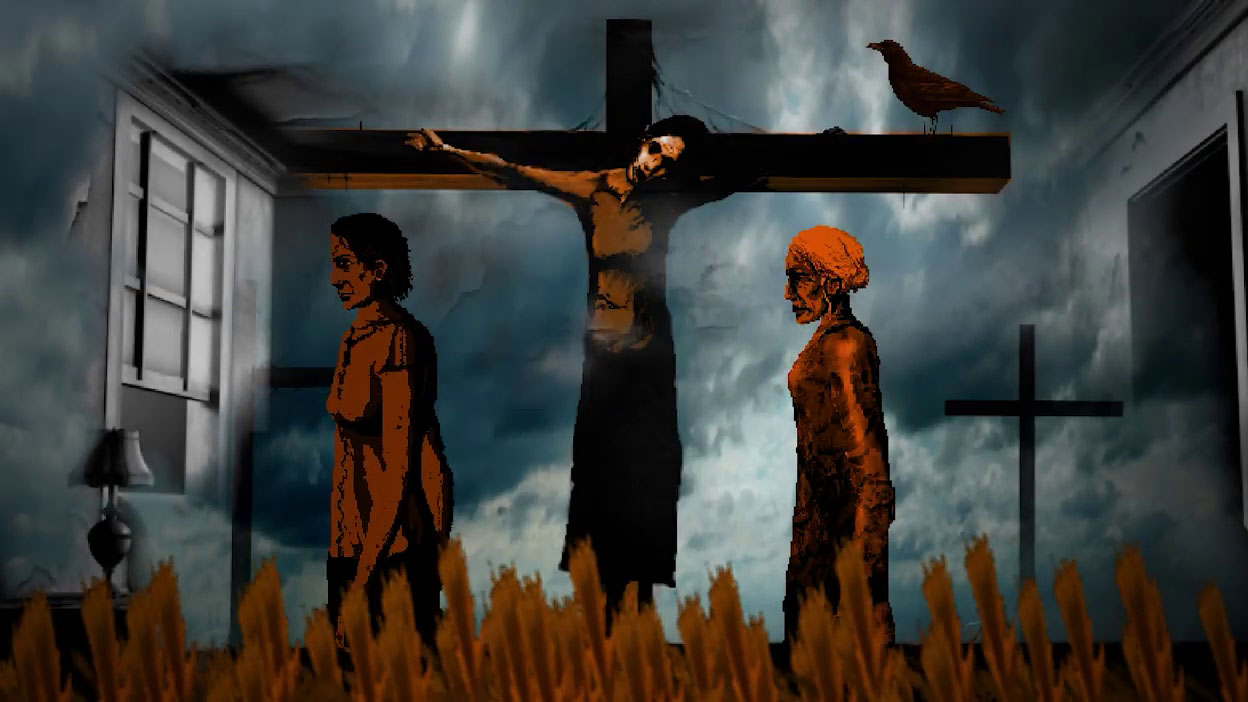Returning to The Cat Lady, one of the best adventure games I've ever played
A game about the tension between despair and hope.
One of the best adventure games I’ve ever played kind of quits being an adventure game an hour or so in, and starts to blossom into a bizarre hybrid. It’s a narrative game of two halves: one the story of a beautiful friendship between Susan, a depressed loner whose only prior company were the stray cats she summoned with sad-ass piano tunes, and Mitzi, a young homeless woman and terminal cancer patient. The other, a supernatural tale of eldritch horror and, above all, gory revenge against twisted, evil men.
As you can probably already tell, The Cat Lady sets all phasers to melancholy from the first minute, pairing up two of the most hopeless and unfortunate souls in order to show us that as long as we’re still kicking, there’s still time to love, baby. Because between pushing Susan through horrific scenes of violence and excess—we’ll get to all of that later—she’ll just hang out and chat with her bud. It truly is one of the better depictions of friendship in games. Mitzi breaks down Susan’s guard with persistence and a keen ear, and by moving into Susan’s flat against her will. Hey, that’s what friends are for, right?
They chat to each other about things completely unrelated to their cosmic dilemma, finding common ground in their pasts, interests, and trauma. It’s a sweet, tender thing to see unfold, and rare in videogames, where friendship is so often treated with the dynamism of two stones brushing up against one another. Mitzi and Susan fight and cry and laugh and unravel as one. They move and change and grow together. It’s the real deal, the sense of gravity in a game designed to unnerve and disorient at every other opportunity.
Paws for thought
All that gossip and teasing and confessional time with Mitzi is necessary downtime. As I teased earlier, you’ll spend the other half of The Cat Lady playing as an immortal demigod whose only remaining purpose is to seek out irredeemably monstrous people and kill them in the most gruesome, thematically vindictive ways you can imagine.
But it takes a rough turn of events to get there. And yeah, quick content warning: this is not a game for the light of heart or anyone that wants to avoid triggering their own trauma. Suicide, depression, and abuse are central themes in The Cat Lady, and unabashedly explored. They’re thrown at the wall and kicked around on the floor. If all the worst things about modern life coalesced like gasoline at the top of a mud puddle, The Cat Lady dances in it.
See, Susan reaches the height of despair in the opening moments of the game. She makes the awful decision to end her own life, fuelled by a pile of traumatic experiences with family, men, and strangers. It’s easy to see why she becomes such a misanthrope, so distrusting of everyone but herself and stray cats. But she’s given something like a second chance, and wakes up in a dirty, stinky field (an afterlife I can believe in) where she’s instructed by an eldritch horror with an extremely cool name, The Queen of Maggots, to return to the world of the living and brutally murder five psychopaths she lovingly refers to as parasites.
From there on the game basically becomes an inverse Se7en, where you already know ‘what’s in the box’ and hunt down the crew of monstrous serial killers that put it there. And these killers get off by preying on innocents in some pretty unashamedly grotesque ways.
Keep up to date with the most important stories and the best deals, as picked by the PC Gamer team.
One, a male doctor, tortures women, disassembles them, and recreates classic paintings with their body parts. It’s objectification taken literally, the patriarchal idealism of toxic masculinity run through a French brutalism filter (see Martyrs, Inside) and propped up for Susan to utterly demolish with her newfound supernatural power. As the details of her past trickle in, so does the catharsis from giving each parasite what they deserve. It’s constant whiplash: the slow tour through a parasite’s nightmare home, their messed up ethos splattered all over the walls, sometimes literally, and Susan’s violent victory lap, an unkillable messenger from alt-hell.
It’s all accompanied by surreal, layered art that mixes a paper doll aesthetic with photography for a truly unique look. It begins with the blue and orange skies zooming by in the backdrop of a grey, monochrome hospital scene. There’s the small detour to the Crow’s dimension, another ancient eldritch entity that manifests here as a massive, darting eyeball against a dimly lit theatre. To leave, you only have to solve a riddle about which of the Crow’s bear-sized, fish-eyed dolls is telling the truth. It’s like one of Monkey Island’s wordplay puzzles, except all the jokes have been gutted and replaced with the feeling that something is very, very oh god so very wrong. Every scene is its own uneasy trip, a multimedia collage of colour and texture comprised of familiar images and materials that never quite sits right, even when The Cat Lady is at its most domestic. This is a grimy, serene world punctuated in equal parts by absolute stillness and graphic violence.
The puzzles shift from traditional item-hunting, trial-and-error tests to more of an interactive walking sim, where you occasionally set up Home-Alone-esque death traps for each of the themed murderers, ensuring they die writhing around in a pool of dramatic irony. As you play as Susan, you’ll cobble together a mace from a doll’s head and a buzzsaw, you’ll use dangerous chemicals to asphyxiate even more dangerous men, you’ll shotgun a man in a dreamlike home invasion, you’ll don a gasmask and go on a full blown rampage. It’s therapy, if therapy was about killing demented, greasy depictions of your demons.
And even though you’re going up against a crew of unfeeling butchers, there’s no fail state or genuine threat to Susan—if she dies, she’s resurrected immediately, thanks to her sort-of divine benefactor—so The Cat Lady is a great fit for those horror fans that don’t like the high anxiety that comes with running from monsters in Amnesia: The Dark Descent or Resident Evil 2.
Im-purr-fect
But it hasn’t aged perfectly. Parts of the soundtrack are laughably bad in the cold light of 2020—that trashy fuzz emo rock you normally find in a Devil May Cry game doesn’t quite find a home in a game that asks to be taken seriously. As I replay the game, I find that kind of aged cheese endearing, but many will find it appalling. And the greater mythos doesn’t always line up with the mental health themes or make much internal sense at all. For a fuller and more fleshed out take on it, you’ll need to play the game’s sequels Downfall and Lorelai. They each feature characters from The Cat Lady and really dig into what those eldritch bums the Queen of Maggots and the Crow, and some new freaky friends, are all about. There just isn’t any videogame trilogy quite like this: dark, strange, and a little rough around the edges, but above all earnest and beautiful.
The Cat Lady is simultaneously goofy and sentimental, an exercise in justice and comic violence that doesn’t always seem to match up with the dead serious subject matter. But it’s a game ultimately about persistence against the pain of existing, and the fleeting bits of comfort and catharsis we find in our connections to one another, or the even smaller bits buried in the microscopic nodules of hope we’re able to conjure up in our darkest moments. And if those nodules take the form of graphic revenge fantasies against genuinely, irredeemably evil people, I’ll take ’em.
James is stuck in an endless loop, playing the Dark Souls games on repeat until Elden Ring and Silksong set him free. He's a truffle pig for indie horror and weird FPS games too, seeking out games that actively hurt to play. Otherwise he's wandering Austin, identifying mushrooms and doodling grackles.






